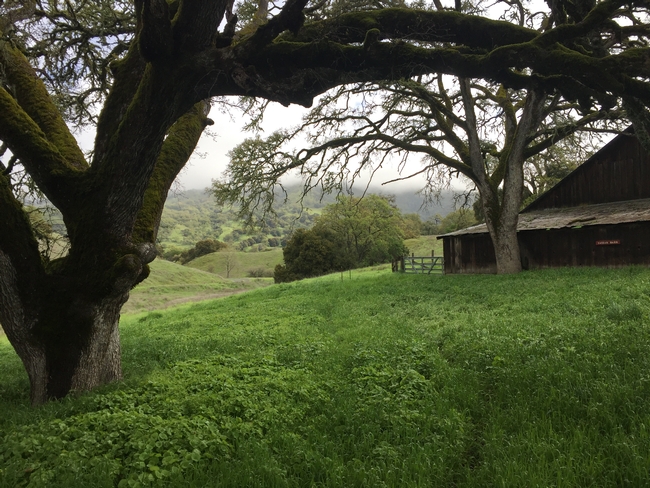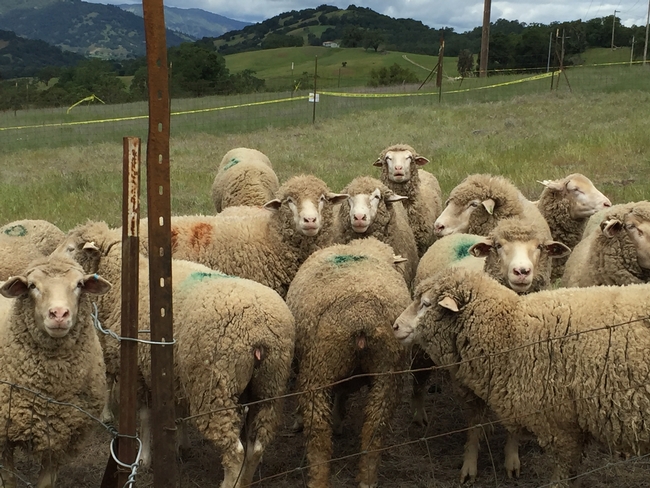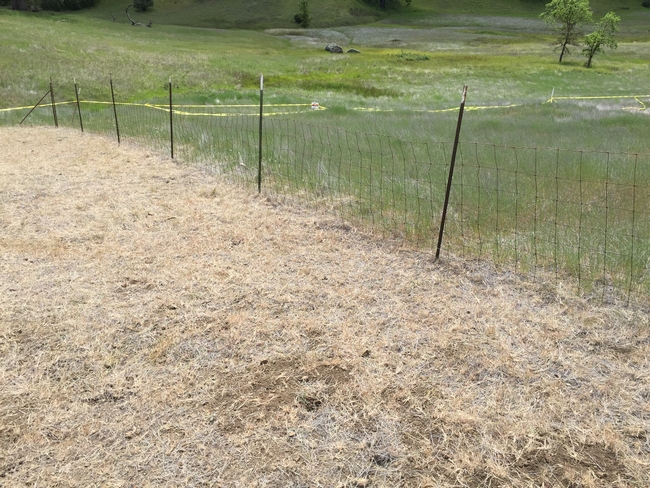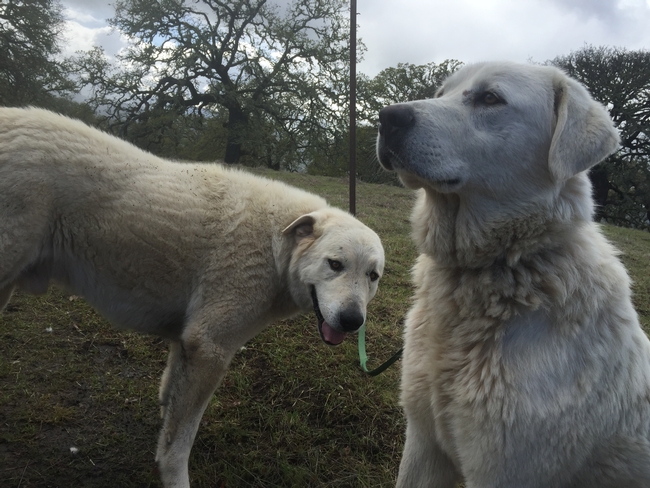Elise Gornish, Josh Davy, Travis Bean, and I are testing the use of sheep for management of late-season invasive annual grasses. This trial is taking place at five sites at the Hopland Research and Extension Center – two with barb goatgrass, two with medusahead, and one mixed.
Treatments include grazing at boot stage (32 sheep-days on 324 m2), revegetation with native spp vs forage spp, and treatment with low or high rates of glyphosate at tillering, boot stage, and heading. The main plots are 18 m x 36 m including an 18 x 18 grazing enclosure and are replicated three times at each site. All treatments are crossed, for a total of 48 subplots in each main plot.
Grazing was conducted from mid-April to early May 2016, depending on the maturity of the invasive grasses at each site. Vegetation cover surveys are ongoing. We anticipate planting the revegetation species in fall of this year.
Many thanks to Kim Rodrigues, Alison Smith, Tom Seward, Troy McWilliams, Hannah Bird, and Chuck Vaughan for their help with this project. (And also the dogs.) There's a lot of infrastructure and animal management involved, and we couldn't have done this without everyone's participation. Western Region IPM is supporting this research.
Attached Images:



